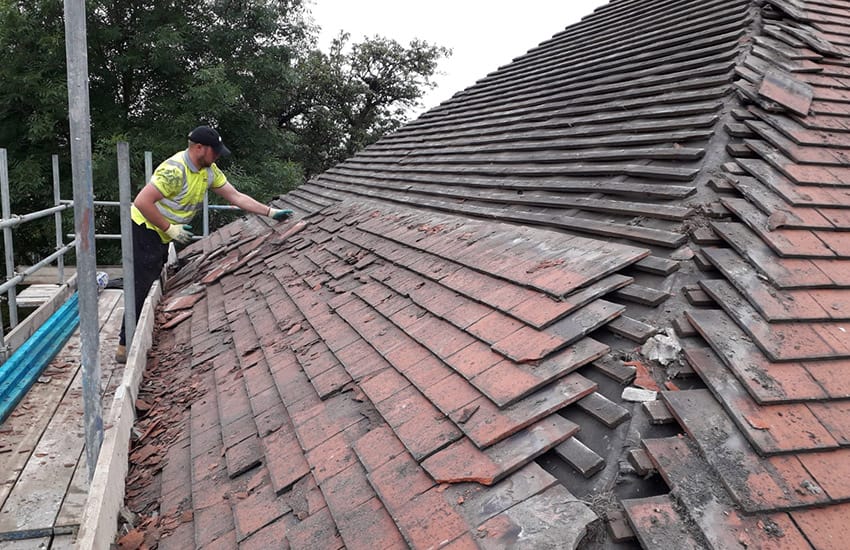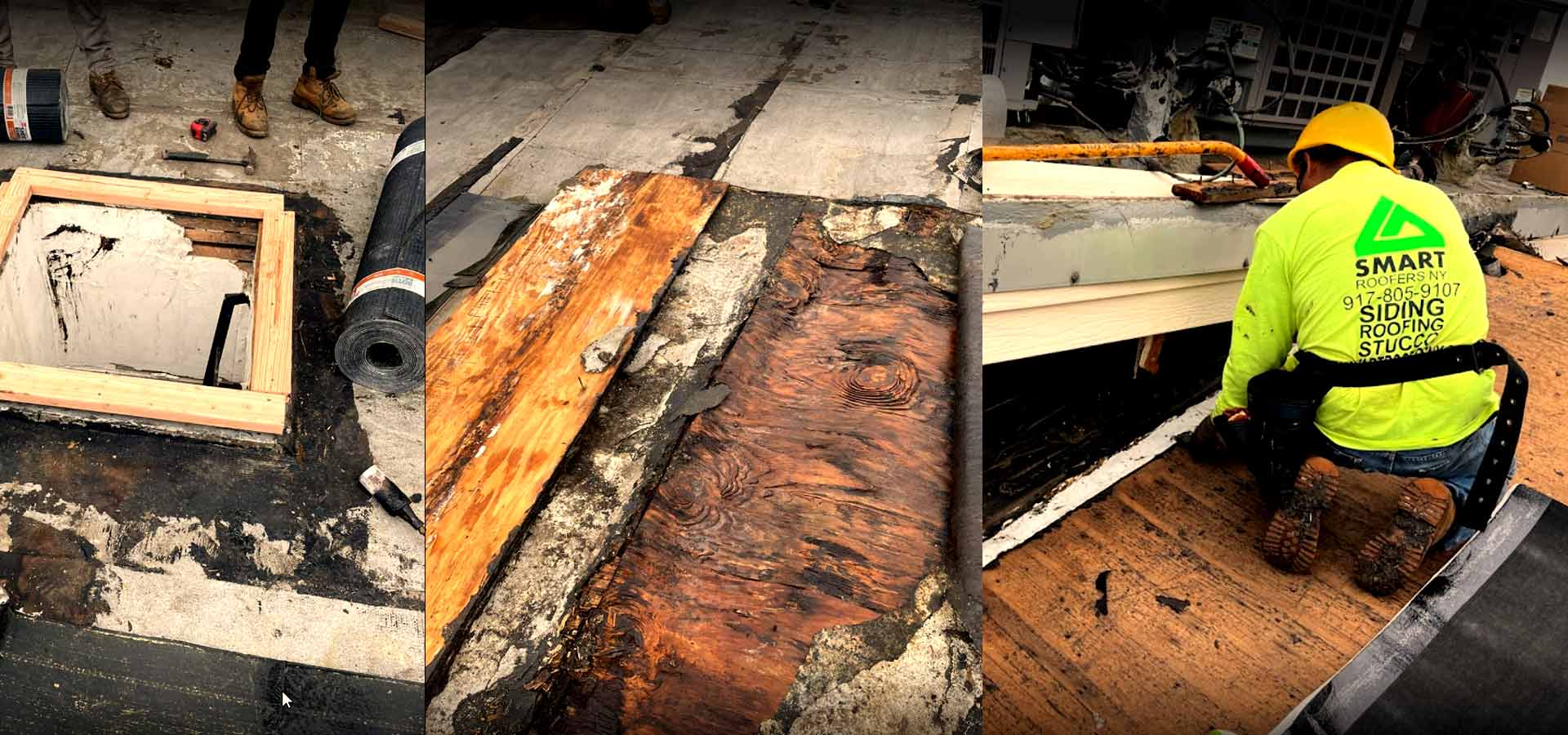Oahu Roofing: Reputable Roofing Solutions for Houses and Companies
Oahu Roofing: Reputable Roofing Solutions for Houses and Companies
Blog Article
Comprehending the Different Kinds Of Roofing Systems: A Comprehensive Overview for Homeowners
With an array of alternatives-- ranging from the traditional gable to the modern level-- each type offers distinct advantages and obstacles that ought to line up with the home owner's particular needs and ecological factors to consider. As we check out the details of various roof covering types, it ends up being evident that one size does not fit all; the right selection might shock you.
Gable Roof Coverings
Gable roofings, characterized by their triangular shape, are amongst one of the most preferred roof styles because of their simplicity and efficiency in dropping water and snow. This design features 2 sloping sides that satisfy at a ridge, permitting effective drainage and decreasing the risk of water buildup. The high pitch generally related to saddleback roofs boosts their capability to take care of heavy rainfall, making them suitable for different environments.
In enhancement to their useful advantages, gable roof coverings use visual flexibility. They can be adapted to numerous building designs, from traditional to contemporary homes. The layout can also accommodate added functions such as dormer windows, which boost natural light and ventilation in the attic room room.
Additionally, gable roofs give enough area for insulation, adding to power efficiency. House owners can select from a range of roofing products, consisting of asphalt shingles, metal, and floor tiles, better enhancing personalization choices.
In spite of their benefits, saddleback roofs may need additional assistance in locations susceptible to high winds or hefty snowfall. On the whole, the saddleback roof remains a preferred option because of its mix of functionality, durability, and visual appeal.
Apartment Roofs
Level roofings are usually recognized for their minimal layout and useful applications, especially in business and industrial settings (oahu roofing). These roofs include a straight or nearly horizontal surface area, which allows for simple building and flexible space utilization. While they might lack the aesthetic allure of pitched roofings, flat roofings provide countless benefits, especially in urban settings where maximizing area is essential
One of the primary advantages of flat roof coverings is their access. House owners can make use of the roofing system space for various purposes, such as roof gardens, terraces, or photovoltaic panel installments. Furthermore, level roofing systems are usually a lot more cost-efficient to set up and keep contrasted to their sloped equivalents, as they require less products and labor.
However, flat roofing systems do existing specific challenges. Appropriate drainage is necessary to prevent water merging, which can lead to leakages and structural damage. For this reason, selecting high-quality waterproofing products and regular evaluations are essential for making sure long life. Common materials utilized for level roofings consist of built-up roof (BUR), changed bitumen, and single-ply membranes, each offering distinct benefits. Generally, level roofs act as a adaptable and practical option for many property owners and organizations alike.
Hip Roofings
Hip roof coverings are characterized by their sloped sides that merge on top, developing a ridge. This layout stands out from gable roof coverings, as all 4 sides of a hip roofing incline downwards toward the wall surfaces, supplying a much more secure framework. The angle of the slopes can differ, enabling for convenience in architectural looks and performance.
Among the main benefits of hip roofings is their capacity to withstand hefty winds and negative weather problems. The sloped surfaces enable better water drain, reducing the danger of leakages and water damage. Furthermore, hip roof coverings supply increased attic room, which can be utilized for storage space or perhaps exchanged habitable areas.
However, building a hip roof covering can be much more pricey and intricate than easier roofing types, such as gable roofing systems. The added product and labor included in developing the slopes and making sure appropriate architectural honesty can bring about greater expenses. Despite these downsides, many property owners favor hip roofings for their resilience, aesthetic charm, and potential for energy performance.
Mansard Roofings
Mansard roof coverings, often acknowledged by their one-of-a-kind four-sided style, feature two inclines on each side, with the lower incline being steeper than the top. This architectural style, stemming from France in the 17th century, is not only cosmetically attractive however practical, as it makes best use of the usable area in the upper floors of a structure. The high lower incline permits even more headroom, making it an check my source ideal selection for attics or lofts, which can be converted right into living spaces.
Mansard roofs are identified by their adaptability, fitting numerous architectural designs, from conventional to contemporary. They can be created with various materials, consisting of asphalt tiles, slate, or metal, providing homeowners with a variety of options to suit their budget plans and choices. Furthermore, the design permits the assimilation of dormer windows, boosting all-natural light and air flow in the top levels.
Nevertheless, it is necessary to think about the possible disadvantages. Mansard roofs may require even more maintenance due to the intricacy of their design, and their steep slopes can be testing for snow and rainfall runoff. Generally, mansard roofing systems incorporate sophistication with usefulness, making them a prominent option among home owners seeking distinct building functions.
Dropped Roofings
As property owners significantly look for simpleness and capability in their architectural styles, dropped roofing systems have become a prominent selection. Characterized by a single sloping plane, a shed roof covering offers a minimal look what i found visual that complements numerous home styles, from contemporary to rustic.
One of the main benefits of a shed roofing system is its uncomplicated construction, which commonly equates to decrease labor and product expenses. This style permits efficient water drainage, reducing the threat of leakages and water damage. Furthermore, the upright slope supplies sufficient area for skylights, enhancing all-natural light within the interior.
Lost roofings likewise use versatility in regards to usage. They can be successfully integrated into enhancements, garages, or outdoor frameworks like sheds and structures. Moreover, this roofing style can fit numerous roof products, consisting of steel, asphalt shingles, or even green roof coverings, aligning with eco-friendly campaigns.
Nonetheless, it is important to think about local climate conditions, as hefty snow loads might demand changes to the roofing's angle or structure. In general, lost roofs present a useful and aesthetically pleasing choice for home owners seeking to maximize capability without endangering design.
Conclusion


Gable roofings, defined by their triangular form, are among the most popular roof covering styles due to their simpleness and efficiency in dropping water and snow. oahu roofing. The steep pitch generally connected with gable roofs improves their capability to handle hefty precipitation, making them ideal for different climates
While they might lack the visual allure of pitched roof coverings, level roof coverings supply countless advantages, especially in city environments where taking full advantage of space is important.

Report this page